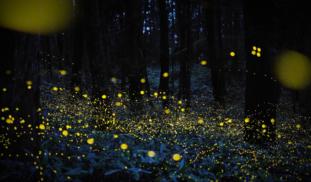Please wait...
About This Project
Fireflies! These silent fireworks on warm summer nights fill us with wonder. But so much about these fascinating critters remains shrouded in mystery. Our team of biologists has joined forces to sequence the genome of the Big Dipper Firefly, Photinus pyralis. This project has the potential to foster important advances in bioscience and medicine, will illuminate how a complex trait like light production evolves, and will help guide future efforts to conserve disappearing firefly populations.

Browse Other Projects on Experiment
Related Projects
How do polar bears stay healthy on the world's worst diet?
Polar bears survive almost entirely on seal fat. Yet unlike humans who eat high-fat diets, polar bears never...
Uncovering hidden insect diversity associated with a likely undescribed gall-forming midge
Does a likely undescribed species of gall-forming midge (pers. comm. Ray Gagné) on Eriodictyon plants (Yerba...
Macrofungi of the California archipelago
The eight islands of the California Archipelago are a well-studied biodiversity hotspot — but we know almost...




